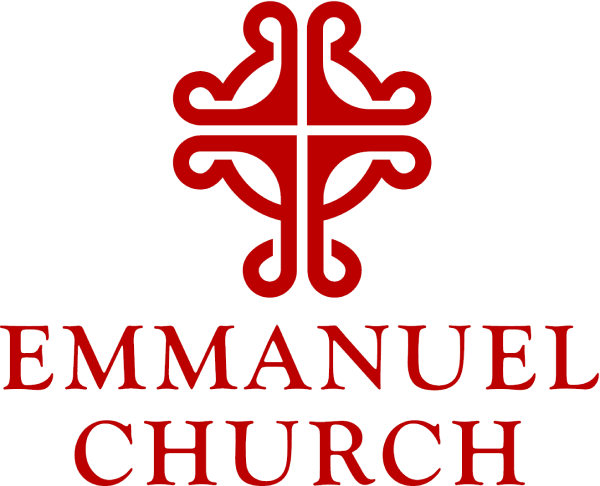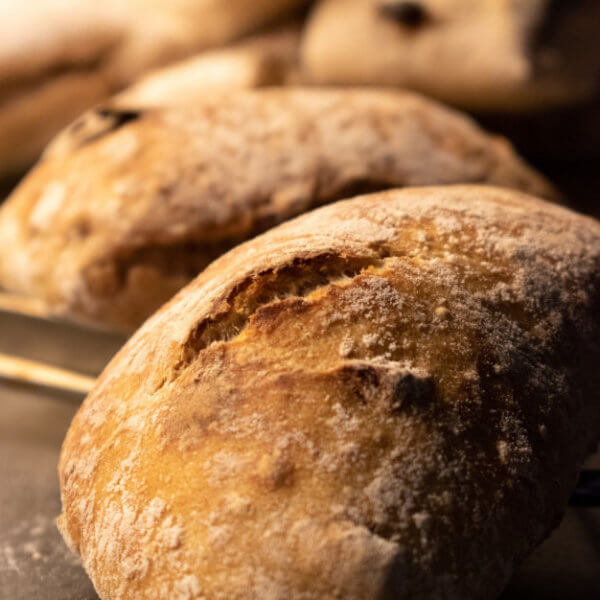
The Abundance of God’s Love
“Jesus said to them, “I am the bread of life. Whoever comes to me will never be hungry, and whoever believes in me will never be thirsty” (Jn 6:35)
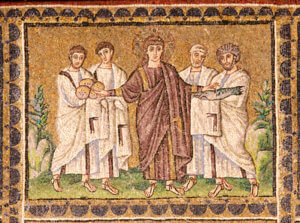 In her sermon last week, Della+ introduces us to the abundance of God’s love. Out of scarcity, a great multitude dine royally upon a few rude loaves and two small fish. The breadth of God’s love exceeds all human understanding. Even after the thousands have eaten to their full satisfaction, there remain twelve baskets overflowing with remnants of bread and fish. God’s message of abundance is breaking through the limits of human understanding. As soon as they are fed, the multitude piles into a fleet of small boats and pursues Jesus across the Sea of Galilee. They seek to receive more of Jesus’ bread of life.
In her sermon last week, Della+ introduces us to the abundance of God’s love. Out of scarcity, a great multitude dine royally upon a few rude loaves and two small fish. The breadth of God’s love exceeds all human understanding. Even after the thousands have eaten to their full satisfaction, there remain twelve baskets overflowing with remnants of bread and fish. God’s message of abundance is breaking through the limits of human understanding. As soon as they are fed, the multitude piles into a fleet of small boats and pursues Jesus across the Sea of Galilee. They seek to receive more of Jesus’ bread of life.
This morning we are drawn into a deeper understanding of our relationship with Jesus. Until now we perceive Jesus only partially, as though seen as an image dimly through a clouded looking glass. In the opening verses of John’s Gospel, we are introduced to Jesus as the Word incarnate. Jesus comes to us as the mystery of God’s gift, sent to reveal the truth to God’s people. In Jesus’ declaration this morning, the mist is cleared away. Jesus reveals his eucharistic presence as the Bread of Life. In receiving this Heavenly Bread our heart’s desire to come into unity with God is fulfilled. The mist is cleared away, but not the mystery.
The Bread of Life
Bread appears often as a symbol in scripture. For those who are scriptural nerds, the term bread appears 330 times, from Genesis right on through the New Testament. Bread is a symbol of life to those in biblical Palestine. This may surprise us, we who live in our Wonder Bread© generation. Many of us shy away from bread for dietary or health concerns.
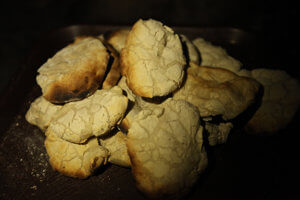 Why is bread a meaningful symbol to those in Jesus’ time? For us, bread is only a side dish. Don’t we often judge a restaurant on the quality of its bread. Is it hot and crunchy? Or is it placed in front of us, unheated and soggy? If so, give a thumbs down to that restaurant! In early Palestine, there is no such luxury. For them, bread and wine is the meal.
Why is bread a meaningful symbol to those in Jesus’ time? For us, bread is only a side dish. Don’t we often judge a restaurant on the quality of its bread. Is it hot and crunchy? Or is it placed in front of us, unheated and soggy? If so, give a thumbs down to that restaurant! In early Palestine, there is no such luxury. For them, bread and wine is the meal.
No surprise, really. Bread and wine are a perfect means to store food energy without refrigeration. In early Palestine, grain is harvested, then taken to circular stone mills. Here it is ground into flour in mills turned by slaves or beasts of burden. The flour is then taken to central bakeries where it is baked into thick round loaves scored in sections.
The meal of city dwellers, those more prosperous, depends on these bakeries. Dinner for the poor is bread, wine, and perhaps, greens. In the dry climate of Palestine, food insecurity and famine are a constant worry. Thus, the term ‘bread of life’ carries powerful meaning to those in Jesus’ time. Those whom Jesus calls, the poor, the sick, the outcasts…these are the hungry and thirsty in real time, all the time.
The Meaning of Bread
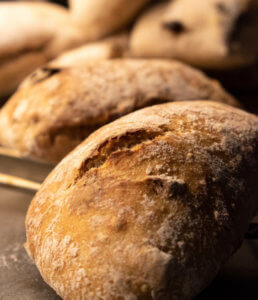
A few verses earlier Jesus appears to the five thousand. Jesus feeds this great crowd out of a pitiful supply of only five loaves of bread. Jesus knows the multitude is drawn to him for want of a meal. Many, if not most of them will not know where their next meal will come from. So let’s cut the crowd a little slack if they fail to grasp the life-giving meaning of the heavenly bread Jesus provides. As Jesus departs from the crowd, he admonishes them “Truly I know that you did not come to me because you saw signs. You came because you ate the bread and your hunger was satisfied.” But he sends them off with encouragement: “But now go forward and work, not for this perishable food, but for the food that lasts, the food of Eternal Life. (Jn 6:26-27)
But even the disciples fail to get it, as they scramble for money to fill the bread baskets…not understanding that Jesus had no need for earthly bread to fulfill his mission. (Jn 6:5-7)
The religious authorities standing nearby are equally blind to Jesus’ message. For them, bread is but a symbol of earthly life. They know by heart our passage from Kings this morning. Here we witness the weary Elijah, traveling the wilderness. He has lost confidence in himself as God’s prophet. Elijah is resolved to end his life. “It is enough; now, O Lord, take away my life, for I am no better than my ancestors.” Wait a moment! God is not willing to lose his powerful prophet, so dispatches the angel of the Lord. The angel arrives with a cake and a jar of water and commands Elijah to eat. That nourishment sustains the prophet onward on his forty-day journey to Horeb, the holy mountain of God.
The authorities do not accept Jesus’ message that the bread he offers represents everlasting life. They do not accept Jesus’ authority. They cannot accept the meaning of eternal life imbedded in a loaf of ordinary, earthly bread. They dismiss Jesus as an uneducated carpenter’s son. “Is this not Jesus, son of Joseph? We know his father and mother.” These are learned Rabbis. Their weekly lesson plan states that it was Moses who brought forth heavenly manna that nourished those returning from exile in Egypt. Tough for a professor accustomed to authority to hear his teachings challenged.
As Mark Twain warns us, “It ain’t what you don’t know that gets you into trouble. It’s what you know for sure that just ain’t so.” The authorities know for sure what just ain’t so. They will not acknowledge the words of this uneducated son of a carpenter. They cannot accept the notion that the meaning of eternal life lives within the symbol of earthly bread. They are victim to the blindness of their certainty.
Hidden Meanings
There are countless examples of objects that symbolize hidden meaning not obvious to some. The American Flag, for example. It is more than a flag. It embodies memories of childhood, reciting the pledge of allegiance in our classroom. For many of us here this morning, it draws back a lifetime of service to our country. It is our symbol of home. The cross was once the image of unspeakable cruelty, torture and Roman oppression. Transformed through the the loving sacrifice of Christ, the crucifix we wear upon our person symbolizes love and the gift of eternal life. So it is with Jesus, who comes to us as the bread of life.
I feel we have become friends since Della+ first welcomed me to Emmanuel last year. So I ask your permission to step inside our personal relationship for a moment. I offer you another example of a powerful, invisible meaning that lies within an ordinary symbol. I was raised in a family not given to wearing wedding rings. During my 55-year marriage to Josephine, I gave no thought to wearing a wedding ring. It was never discussed. During the weeks following Joso’s death, something was missing. My heart cried out for a physical witness to our long life together. I went to the local jeweler. I now wear this band inscribed with our initials and dates of our life together. As I think of her, which is every day, this symbol unifies me in our lifetime partnership. It is thus that the communion wafer brings us to unity with Christ.
Many of us at Emmanuel recall the days before the 1979 Book of Common Prayer. In those days, Morning Prayer was the tradition. Holy Eucharist was celebrated only once a month. There is a dignity in those ancient words of the Rite I liturgy that I long for, even today. What a pleasure to return to Morning Prayer with you this morning. And yet, there is a certain singularity in the richness of the prayers we recite this morning. In Holy Eucharist we are called to a closeness in community with each other. That community is expressed as we are called to: “Lift up your hearts!” As we raise our hearts together in the opening words of the Eucharist, our hearts travel together, in community, up a holy column created by the Priest as she raises her hands over the bread and wine, directly to God.
And so do we come into unity with Jesus, the bread of life of which we partake at the Eucharist. It may be in the form of a wafer, a piece of sourdough bread or any crust that has been blessed. In that moment it no longer exists as the bread which fulfills our earthly needs. As we approach the communion rail, we take up that daily bread we pray to receive from God, our Father who art in Heaven. In consuming this bread we come into unity with Jesus, the bread of life and receive the gift of eternal life. As Jesus explains the mystery of the bread of life to those five thousand he has just fed, let us join in their response: “Sir, give us this bread always.” (Jn 6:34)
Works Referenced:
This is a sermon delivered to the congregation of Emmanuel Church, Newport, RI on August 8, 2021. I am indebted to the Very Rev. Andrew McGowan for his April 19, 2021 presentation to the congregation of Christ Church, Greenwich, CT on the significance of bread in biblical Palestine. Also, for their insights into the lectionary, i acknowledge: R. Alan Culpeper, The Gospel and Letters of John, Abingdon Press (1998); N.T. Wright, John for Everyone (Part I), Westminster John Knox Press (2002); and Lamar Williamson, Jr. Preaching the Gospel of John (2004)
Roger C. Bullard, August 8, 2021
